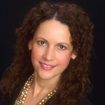
 By Diana Moss
By Diana Moss
April 19, 2012
I love watching movie trailers. The promoters give a glimpse of the story, the setting, and the characters. They set expectations for what the movie will be like long before I settle in with my popcorn to watch the story unfold. And most of the time, if the trailer engages me, so does the movie, because I have a good idea of what to expect.
I often think of the selection process as a “Coming Attraction” or preview, for potential employees looking to join a new company or move from one job to another within an organization. From the first connection, be it on-line or in-person, to the day you welcome your new hire onto your team, employee engagement is taking place.
Ask anyone to tell you about their experience getting a new job - the job posting, the application process, the first email, the first phone call, the interviews, the job offer - and they’ll no doubt be able to give you a detailed description of what did or didn’t happen, what was said or not said, and how it shaped their expectations of what things would be like if they were offered the job. If they’ve been on the job for a while, they’ll say things like, “I knew it was going to be a good fit,” or “It’s not what I expected.”
The last sentiment can often lead to disengagement and even resignation. In fact, the number one reason noted in the book, “The 7 Hidden Reasons Employees Leave,” by Leigh Branham, is “The job or workplace was not as expected.” Sometimes managers are shocked by the resignation of their new employees, other times they say things like, “I knew it was coming,” and “I saw the signs, even during the interview process.” The selection process is your first opportunity to begin building employee engagement by setting clear expectations. Here are some best practices you can use the next time you are looking to hire a new team member.
Write Realistic Job Descriptions
Clearly describing what a job entails in a job description or an on-line posting is harder to do than you may think. Strive to explain the key responsibilities of the position, the skills, knowledge and abilities needed to successfully perform the role in a detailed, yet concise manner. Use words that are descriptive of your company culture and working environment, like, fast-paced, team-player, or highly responsive. Even well written job descriptions can leave room for interpretation because the candidate is reading the description through the filter of their own experience and perceptions. This is why a well-written, realistic job description is only one step in building the foundation for employee engagement.
Provide Realistic Job Previews
More and more companies are including realistic job previews as part of their interview process. In the January 2012 HR Magazine’s article titled, “Show and Tell,” by Michael A. Tucker, psychology professor Zinta S. Byrne at Colorado State University in Fort Collins explains that realistic job previews can contribute to “higher retention and more-positive employee attitudes.” Realistic job previews can range from videos, to job shadowing to actual simulation of the work required for the position. A job preview allows the candidate to move from simply hearing about the position to seeing and possibly even doing a portion of the job. Involving employees who currently perform the job in part of the selection process is another way to provide the candidate a true sense of the position. Being able to ask questions and hear about the job first hand from someone who performs it every day is a great way to help shape a candidate’s expectations.
Discuss Expectations - Yours & Theirs
Discussing expectations, both yours and theirs, is crucial. Expectations that are in alignment are crucial to employee engagement, job satisfaction, and even job performance. Misalignment or gaps in expectations can often contribute to disengagement once the employee is on board. It is important for hiring managers to discuss not only the obvious expectations of the position, for example the key responsibilities, but also the take time to discuss the not so obvious. In addition to talking about the overall company culture, spend time discussing the department or team working environment and culture around things like meetings, email, and the flow of information. Talk about how work is assigned, the pace, and how decisions are made. In other words, talk about “how” things get done. Providing real life examples of how past projects, key initiatives, and day-to-day work is accomplished can help paint an accurate picture of what it is really like to work for your department and organization. To uncover the candidate’s expectations, ask probing and clarifying questions. Ask for, and provide, specific examples throughout the conversation to prevent misperceptions.
The next time you have an open position to fill, take advantage of the selection process as an opportunity to begin to build employee engagement. Ensure the selection process includes a realistic job description and job preview. Take the time to discuss in detail the expectations for the position - both yours and the candidate’s. Think of the selection process as a way to align expectations; a preview for employee engagement. For more ideas on building a culture of employee engagement once the candidate joins your team, check out a previous article, Making Employee Engagement a Habit: Three Ways to Engage Employee Every Day.
Diana Moss is senior director of Employee Engagement and Employee Relations for Comcast, one of Chicago’s 101 Best & Brightest Companies to Work For in 2010 and 2011. Connect with her at www.linkedin.com/in/dianamoss.








